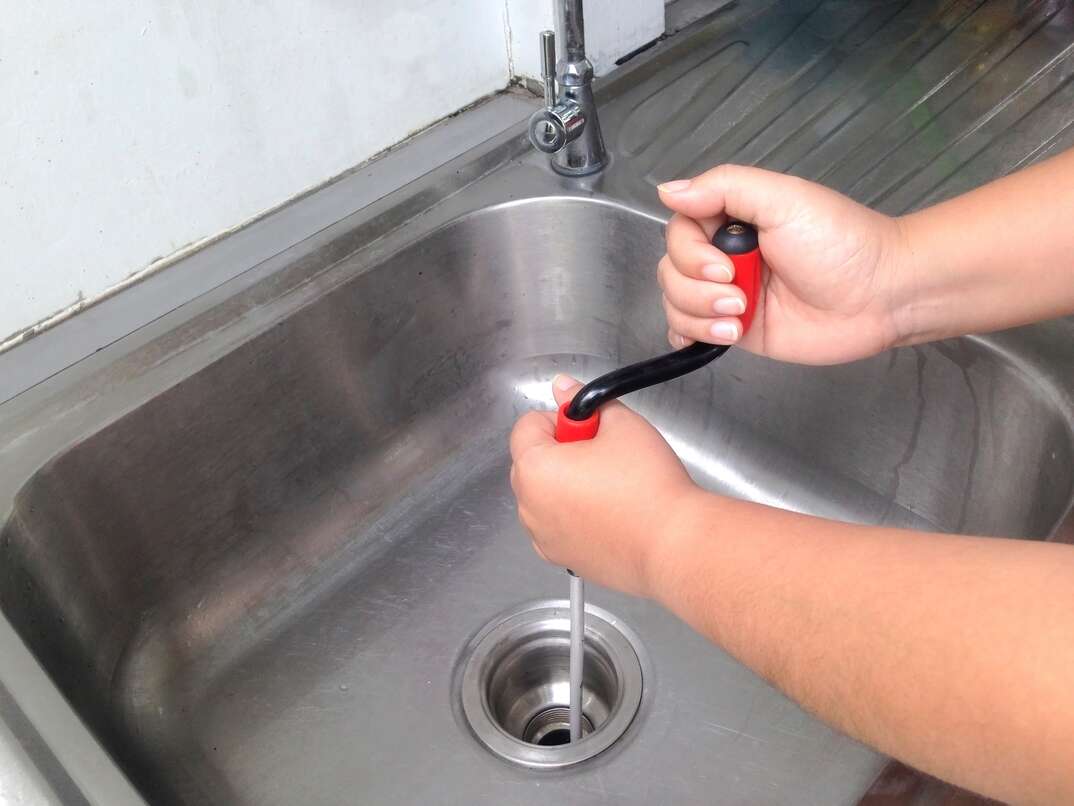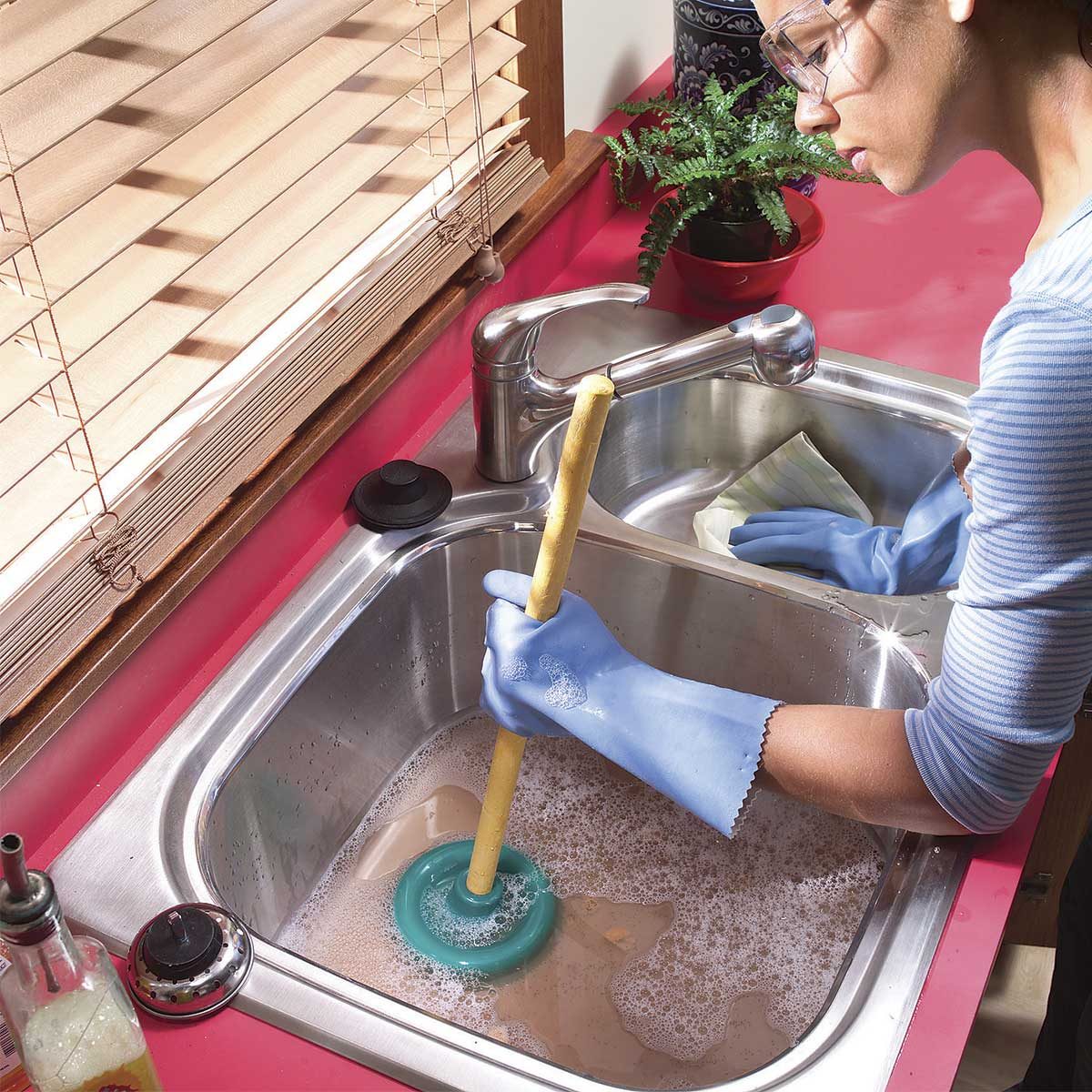Useful Ways To Repair Slow-Draining Sink Problems
Useful Ways To Repair Slow-Draining Sink Problems
Blog Article
Are you currently interested in details concerning Solved! How to Fix a Slow Sink Drain?

Intro
We have actually all existed: You're brushing your teeth or washing your hands, and you observe the water pooling in the sink. As opposed to promptly swirling away, it sticks around, turning your once-refreshing morning routine into a miniature swamp scene. A slow-draining sink isn't just annoying; it's often a sign of larger plumbing problems lurking below the surface area. The good news is that most slow-draining sinks can be taken care of with a little know-how, a few fundamental devices, and some patience. Ready to tackle this task head-on? Let's roll up our sleeves and dive right in.
Recognizing the Sources Of a Slow-Draining Sink
Before you begin poking around in your pipes, it helps to know what might be causing the slowdown. Comprehending the source makes it simpler to select the right fix.
Devices and Products You'll Require
The right devices make all the difference. Thankfully, you will not need a completely equipped plumbing's van to get the job done.
Step-by-Step Overview to Taking Care Of a Slow-Draining Sink
Currently, let's get involved in the nitty-gritty. This detailed process will certainly lead you via straightforward strategies to recover your sink's drain.
Step 1: Remove and Tidy the Stopper
Frequently, the stopper (that small plug you lower to obstruct water) is the very first perpetrator. Remove it very carefully and clean off any type of hair or crud trapped around its base. Wash it thoroughly before putting it back in place.
Step 2: Utilize a Bettor to Dislodge Debris
Got that plunger prepared? Setting it over the drain and provide it a couple of company pumps. The idea is to produce suction that can loosen any blockage. If you see bits of debris floating up, you're on the appropriate track.
Action 3: Try a Drain Serpent or Wire Hanger
If the bettor does not work, it's time to bring out the drainpipe serpent. Gently feed it right into the drain and twist as you go. You might feel some resistance-- that's likely the clog. Keep twisting and pulling until you eliminate the blockage. If you do not have a drainpipe serpent, a corrected cable hanger can work in a pinch.
Step 4: Use a DIY Drain Cleaner
A natural cleaner made from cooking soft drink and vinegar can break down recurring grime. Put half a mug of baking soda right into the drain, adhered to by half a mug of vinegar. Let it fizz for about 15 minutes, then flush with hot water. This chain reaction commonly does marvels for small clogs.
Step 5: Reconstruct and Examine the Sink
Placed every little thing back with each other and run the tap. Does the water currently swirl down the tubes at a commendable speed? If yes, give yourself a pat on the back. Otherwise, don't misery-- there are still a few more dress up your sleeve.
Essential Devices for Do It Yourself Fixes
A bettor is your best starting point. A little, sink-sized bettor creates suction that can displace small obstructions. For even more persistent clogs, a drainpipe snake (in some cases called a plumbing technician's auger) works marvels. A pair of handwear covers, a flashlight, and perhaps a set of protective safety glasses are also convenient.
Suggested Cleansing Solutions
Mild meal soap and hot water can aid break down greasy build-up. A mixture of baking soft drink and vinegar is a reliable home remedy, and enzymatic cleaners provide an even more eco-friendly technique. Maintain chemical drainpipe cleansers as a last option, as they can be extreme on your pipelines.
Usual Wrongdoers Behind Slow Water Drainage
So, what's blocking points up? Commonly, it's a combination of day-to-day particles-- believe hair, soap scum, tooth paste deposit, and remaining food fragments. Gradually, these little bits collect and cling to the pipeline walls, progressively narrowing the flow and making it harder for water to pass through. Sometimes, natural resource from tough water can likewise add to the crud, developing the best storm for stubborn blockages.
When is it Time to Do Something About It?
If you see the water draining pipes slower than common, it's a great concept to intervene sooner instead of later on. Waiting too long could cause finish obstructions, unpleasant smells, and even pipe damage. If the water takes greater than a couple of seconds to clear out after shutting off the tap, consider it a warning and get ready to put on your do it yourself hat.
Safety And Security First: Precautions and Prep work
Before you launch into unclogging mode, consider safety and security. You're dealing with potentially filthy water and particles, so slip on a set of gloves. If you're utilizing chemical cleaners, ensure the room is well-ventilated and comply with the directions on the label.
Protective Equipment and Office Configuration
Lay down some old towels or rags around the sink location to capture dashes. Eliminate any items that could get in your method, like soap dispensers or tooth brush holders. Make sure you have great lighting-- get a flashlight if needed.
Different Methods for Stubborn Clogs
Not all obstructions are created equivalent. If your sink still rejects to cooperate, take into consideration these alternative options.
Sodium Bicarbonate and Vinegar Method
We already discussed this, but it's worth noting once again. This gentle, green technique is safer than chemical cleaners and typically fairly reliable.
Enzymatic Drain Cleaners
Enzyme-based cleansers use natural bacteria to digest organic matter. They're an outstanding choice if you're wanting to avoid harsh chemicals. Simply bear in mind, they might take a bit longer to work their magic.
Chemical Drain Cleansers: Pros and Cons
Chemical cleansers can blow up via hard obstructions fast, but they're not without drawbacks. They can create warmth and fumes, damages pipes if used exceedingly, and present ecological threats. Use them sparingly, and constantly adhere to the instructions carefully.
Safety Nets to Keep Your Sink Flowing
Avoidance is the best remedy. By taking on a few basic behaviors, you can keep your sink from decreasing to begin with.
Regular Cleansing Practices
Wipe down the sink basin and component location frequently. Eliminate hair or food particles before they have a chance to wash down the drain.
Preventing Unsafe Materials Away
Think twice prior to unloading coffee grounds, oil, or coarse vegetable scraps down the sink. These offenders cling to pipe walls, developing clogs gradually.
Routine Maintenance Checks
Set up a fast regular monthly evaluation. Run warm water through the sink for a couple of minutes, paying attention to the circulation. If it seems slow-moving, act fast prior to it comes to be a full-blown obstruction.
When to Call a Professional Plumbing Professional
In some cases, no matter exactly how tough you attempt, that block simply won't budge. That's when it's time to generate the pros.
Signs That Show an Extra Severe Problem
If your sink drains slowly in spite of several attempts, or if you see water backing up in other fixtures (like your shower or bathroom), you may have a much more significant plumbing problem lurking deeper in the system.
Balancing Do It Yourself Initiatives with Professional Help
While DIY can save you money and offer a sense of success, there's no embarassment in calling a specialist. An expert plumber can analyze your whole plumbing arrangement, making sure there's no underlying damage or long-term trouble that might cost you more down the road.
Contrasting Expenses and Long-Term Solutions
Before choosing, think about the big picture. An inexpensive, quick fix could address the issue momentarily, but buying a more long-term solution can save you money and stress and anxiety over time.
Considering the Costs of Do It Yourself vs. Professional Repairs
DIY fixes typically set you back bit greater than the cost of a plunger or a bottle of cooking soft drink. Professional services, on the other hand, featured a cost yet might prevent repeated issues and costly repairs later.
Investing in High Quality Fixtures and Upgrades
If your sink's layout adds to frequent clogs, it could be worth updating to higher-quality fixtures or changing the pipes layout. Consider this an investment in your house's capability and comfort.
Conclusion
A slow-draining sink can feel like a small irritability, however it's typically a sign that your pipes requires a little tender loving care. By recognizing the root causes, using the right tools and methods, and devoting to simple safety nets, you can maintain your sink flowing openly. And when all else falls short, never think twice to employ a professional-- your home's plumbing is worth the financial investment in treatment and maintenance.
Three Common Ways to Fix a Slow Drain
Baking Soda Method
Boil a full pot of water. Measure out cup of baking soda and pour it down the drain. Then take cup of the magical cleansing substance known as white vinegar and drop that down there too. Allow the mixture to fizz in the drain for five minutes as the vinegar and baking soda combine. Now dump in that whole pot of boiling water. This combination of cleaning substances should clear out anything that is causing your sink to drain slowly. If it doesn t...
Zip-It
If the baking soda method doesn t clear out your drain, it may be because a significant amount of hair and/or other debris has collected there and you need to remove it. Purchase a Zip-It tool at any home improvement or hardware store and insert it into your drain. It will catch any collected hair or debris that s blocking the flow of water. Pull it out. If it s got a big clump of hair, etc. on the end, you ve probably got your culprit.
Drain Cleaner
If these methods don t work, there is the standard drain cleaner that you can also buy in a hardware store or even your local grocery store. It s better if you can use a household solution, but these drain cleaners often work in a pinch. They re very simple to use. You generally just dump them in your drain and wait. If even this method is not effective, it may be time to call the plumber.
https://www.mrrooter.com/oneida/about-us/blog/2017/july/three-common-ways-to-fix-a-slow-drain/

I came across that piece of writing about Solved! How to Fix a Slow Sink Drain while doing research the search engines. If you liked our page please remember to share it. We value reading our article about 4 Tips to Fix a Slow Draining Sink.
Customer Reviews Report this page